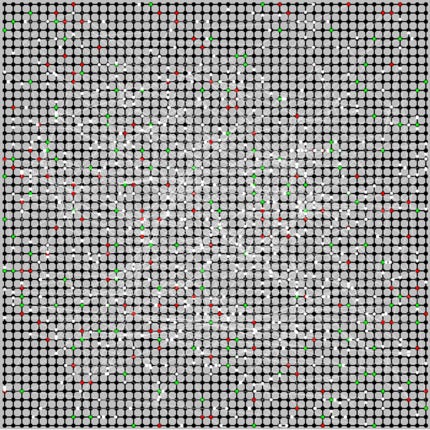
Classical versus Quantum Computing Visualization, JavaScript, 2025
This JavaScript animation highlights major behavioral differences in classical versus quantum computing. Particles as white dots (electrons, photons, etc), are released from distributed nodes and travel to a random node, transmit a binary information pattern (red or green, 0 or 1), and disappear. In the quantum computing animation, particles are released as entangled pairs (visualized by white lines), and instantaneously collapse when both particles reach their destination node, indicating how quasi-instantaneous communication at any distance is observed in quantum communication systems. Emergent patterns can be observed in the quantum animation in the form of traveling entanglement webs, which, in a real quantum computer, could contribute to additional complexity in the form of constructive or destructive interference.
This assumes a fully hypothetical quantum computer beyond current physical limitations, which is composed of a large number of theoretical nodes capable of generating, entangling, releasing, capturing and measuring particles. Note: best experienced on a desktop browser.